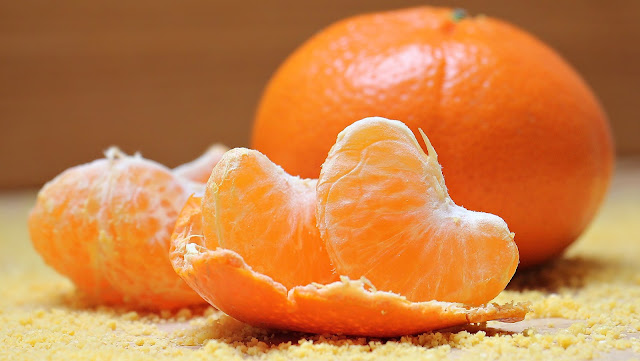Benefits Of Red Amaranth Leaves & Red Amaranth Seeds
Red Amaranth Recipes & Seeds – Nutritious and Delicious!
Red amaranth is an ancient grain-like seed that is packed with vitamins, minerals, and other health benefits. It's not only incredibly nutritious, but it's also incredibly delicious! Not only can you use red amaranth leaves in a variety of dishes, but you can also purchase red amaranth seeds to grow your own plants at home. In this blog post, we'll discuss the health benefits of red amaranth, provide some tasty red amaranth recipes, and explain how to grow your own red amaranth.What Is Red Amaranth?
Red amaranth is an incredibly nutritious and delicious plant. Not only are its leaves packed with vitamins, minerals, and antioxidants, but its seeds are also full of protein, fiber, and essential fatty acids. Red amaranth leaves can be cooked in many different ways, from stir-fries to soups and salads, while its red amaranth seeds can be sprouted, boiled, or roasted for a crunchy snack. For those looking to add more nutrition to their diet, red amaranth is the perfect choice.Nutrition Facts
Red Amaranth is a nutritious and delicious grain that has been used in traditional diets for thousands of years. It contains a lot of protein, antioxidants, vitamins, and minerals. Red Amaranth leaves are especially nutrient-dense, containing important minerals such as calcium, iron, magnesium, zinc, and potassium. Red Amaranth is also a great source of dietary fiber, with 100g containing almost 6g.The health benefits of red amaranth are numerous. Given that it contains all nine of the required amino acids, it is a complete protein. It is naturally low in fat and has no cholesterol. The antioxidants found in red amaranth may help reduce inflammation and protect against some diseases. In addition, red amaranth may also help to lower blood sugar levels and improve cholesterol levels.
When preparing red amaranth, it is best to use the whole grain to get the maximum nutritional value. Red amaranth can be cooked in a variety of ways, including boiling, steaming, and baking. The leaves can be used fresh or dried in salads, soups, and stews. Red Amaranth flour can also be used in baking or to make porridge and other dishes.
There are very few side effects associated with red amaranth. If you suffer from celiac disease, you should be aware that some varieties of red amaranth contain gluten. Otherwise, red amaranth can be enjoyed as part of a balanced diet without any negative consequences.
Red Amaranth is a nutritious and delicious grain that is easy to incorporate into your diet. With its many health benefits and relatively few side effects, it is an excellent way to get essential vitamins and minerals. Be sure to check out some of our favorite red amaranth recipes and learn how to incorporate this nutrient-rich grain into your meals! One recipe we love is our Roasted Cauliflower with Tahini Sauce. Our recipe includes amaranth leaves and provides over 200% of your daily vitamin A requirement per serving. The roasted cauliflower tastes amazing with the tangy tahini sauce on top! Red Amaranth seeds can also be made into healthy crackers, perfect for snacking on while you’re reading more about this fascinating grain!
Red Amaranth Benefits
Red Amaranth, a nutrient-packed superfood, offers many health benefits. Rich in vitamins and minerals, red amaranth is an excellent source of dietary fiber, calcium, iron, magnesium, zinc, phosphorus, and potassium. The high fiber content helps to regulate digestion, while the range of vitamins and minerals promote general good health. Red amaranth is also low in fat and contains essential fatty acids.Red amaranth is a great source of protein, offering up to 15 grams per cup. It also contains essential amino acids like lysine, methionine, and threonine which can help boost muscle growth. Additionally, it is packed with antioxidants like phenolic compounds, which fight off cell damage caused by free radicals.
Other red amaranth benefits include promoting heart health due to its rich content of vitamin B6, folate, and magnesium, which are all known to lower bad cholesterol and reduce the risk of cardiovascular disease. It also helps maintain strong bones with its high levels of calcium and phosphorus, which work together to strengthen them.
Overall, red amaranth is a nutritious and delicious way to get your daily dose of vitamins and minerals! Whether you eat it as a grain or use it as a main ingredient in recipes, red amaranth is sure to add some nutritious benefits to your diet.
How To Cook Red Amaranth
Red leaf amaranth is a delicious and nutritious addition to any meal! It has a slightly sweet, nutty flavor that works well with many dishes. You can buy it as seeds, or in its leafy form, and it makes a great side dish or ingredient for salads, soups, stir-fries, and more. Here are some tips on how to cook with red leaf amaranth:1. To make a simple side dish, boil the seeds in salted water for about 15 minutes. Once cooked, season with olive oil, salt, and pepper.
2. To add flavor and texture to salads, lightly toast the red leaf amaranth seeds in a dry pan over medium heat. This will bring out their nutty flavor and crunchy texture.
3. For an interesting twist on stir-fries, cook up some red leaf amaranth leaves in oil and garlic. Serve over rice or noodles.
4. If you’re looking for a flavorful soup base, simmer some red leaf amaranth leaves in vegetable or chicken stock for 15 minutes. Add your preferred vegetables or proteins after that.
Red leaf amaranth is an easy way to add nutrition and flavor to any meal. Try out various cooking techniques to see which one suits you the best.
Red Amaranth Recipes
Red amaranth is a nutritious and delicious superfood that's easy to add to your diet. Its vibrant red leaves are full of nutrients and are great for adding to salads, stir-fries, soups, stews, smoothies, and more. Red amaranth also has seeds that can be eaten or used to sprout new plants. Here are some delicious recipes you can use to incorporate red amaranth into your meals.1. Spicy Red Amaranth Salad – This is an easy and flavorful salad that is perfect for any occasion. Start by combining cooked red amaranth with chopped bell peppers, red onion, jalapeno pepper, cilantro, lime juice, and salt. Serve chilled and enjoy!
2. Stir-Fried Red Amaranth with Ginger – For a quick and tasty side dish, stir-fry red amaranth with fresh ginger, garlic, and green onions. Drizzle with soy sauce and sesame oil for extra flavor.
3. Red Amaranth Soup – For a comforting meal on a cold day, try this hearty soup. Start by sautéing onions, garlic, and carrots in a pot. Add vegetable stock and diced potatoes and simmer until the potatoes are tender. Then add red amaranth leaves and cook until the leaves are wilted. Finish with a sprinkle of parsley and serve hot.
4. Red Amaranth Smoothie – Start your day off right with this energizing smoothie. Blend together frozen banana, yogurt, milk, honey, red amaranth leaves, and a handful of ice cubes for a nutrient-packed beverage.
5. Red Amaranth Seeds – Red amaranth seeds can be eaten raw or cooked. Try sprinkling them over salads or adding them to smoothies or trail mix for an extra crunch. You can also sprout them to add to sandwiches or salads for a fresh burst of flavor.
Whether you’re looking for a healthy snack or a quick dinner recipe, red amaranth is a versatile and nutritious ingredient that will bring color and flavor to any meal. Give one of these red amaranth recipes a try today!
Red Amaranth Seeds
Red amaranth is a highly nutritious and delicious food that has a host of health benefits. The small red amaranth seeds are packed full of vitamins, minerals, and essential amino acids, making them an excellent source of dietary nutrition. These tiny little seeds have been enjoyed by people for thousands of years and have become an increasingly popular ingredient in modern recipes.Red amaranth benefits range from providing cardiovascular protection to aiding digestion. They are also full of antioxidants which help protect cells from damage and oxidative stress. Additionally, red amaranth contains phytonutrients which can reduce inflammation and support healthy skin.
For those looking to incorporate red amaranth into their diet, the small red amaranth seeds can be ground up into flour to make delicious breads, cookies, and other baked goods. Additionally, they can be used in salads and as a topping on dishes such as tacos or burritos. Red amaranth can also be boiled or steamed and eaten on its own as a side dish or as part of a main meal.
No matter how you choose to enjoy it, red amaranth provides a wealth of health benefits. Whether you’re looking for an easy way to get more nutrition in your diet or just want to add some delicious flavor to your dishes, red amaranth seeds are a great choice!
Red amaranth Leaves Side Effects
Red amaranth leaves are considered a powerhouse of nutrition, boasting an impressive range of health benefits. However, it’s important to note that red amaranth leaves can also have some side effects. In this blog post, we will explore the potential side effects of consuming red amaranth leaves, as well as the numerous health benefits associated with them.Red amaranth leaves contain a wide variety of nutrients, including protein, calcium, iron, zinc, magnesium, and phosphorus. 100g of red amaranth leaves contains 20-22g of protein, 0.9-1.2g of fat, 11-15g of carbohydrates, 5-7g of dietary fiber, and 65-90mg of calcium.
Red amaranth leaves are packed with vitamins and minerals that can help promote overall health and wellness. Some of the health benefits of consuming red amaranth leaves include:
• Improved Digestion: Red amaranth leaves contain dietary fiber, which can help improve digestion and reduce constipation.
• Reduced Blood Pressure: Red amaranth leaves contain a high amount of magnesium, which helps to regulate blood pressure levels.
• Strengthened Bones and Teeth: Red amaranth leaves are rich in calcium, which is essential for strong bones and teeth.
Although red amaranth leaves offer many health benefits, there are some potential side effects associated with consuming them. These side effects may include:
• Gastrointestinal Discomfort: Consuming too much fiber from red amaranth leaves can cause gastrointestinal discomfort such as bloating, gas, or diarrhea.
• Low Blood Sugar Levels: Red amaranth leaves may lower blood sugar levels in some people, so it’s important to monitor your levels closely if you consume them regularly.
• Allergic Reactions: Some people may be allergic to red amaranth leaves and may experience skin reactions or respiratory symptoms.
Overall, red amaranth leaves are a nutritious and delicious addition to any meal. However, it’s important to consider the potential side effects before consuming them on a regular basis. If you’re looking to add red amaranth leaves to your diet, it’s best to consult your doctor first to ensure it’s safe for you.
Red Amaranth Family
Red amaranth is an amazing and nutritious plant, packed with vitamins and minerals that can provide a range of health benefits. From its bright red leaves to its edible seeds, it’s a versatile ingredient that can be used in various dishes. If you’re looking for healthy alternatives to traditional ingredients, look no further than the red amaranth family.The leaves of the red amaranth are high in vitamins A, C, and K, as well as magnesium, potassium, and calcium. It also has high levels of dietary fiber and protein, making it a great addition to salads, soups, and other dishes. There are very few side effects associated with red amaranth leaves, making it a safe choice for everyone.
When it comes to nutrition, red amaranth is a winner. 100g of raw amaranth contains almost 20g of protein, as well as essential fatty acids and other nutrients. The seeds are high in minerals such as iron, zinc, and magnesium. The benefits of amaranth include improved digestion, increased energy levels, lower cholesterol levels, and more.
Red amaranth is a great choice for creating delicious recipes. Its unique flavor can easily be added to various dishes to add a nutty taste and crunch. Amaranth flour can also be used to make breads, cakes, muffins, pancakes, and more. Red amaranth can even be popped like popcorn for a unique snack!
No matter how you choose to enjoy red amaranth, you can be sure that you’re getting plenty of nutritional benefits from this tasty and versatile plant. With its abundance of vitamins, minerals, and protein, you can enjoy the flavor while reaping the health benefits of this ancient grain.







